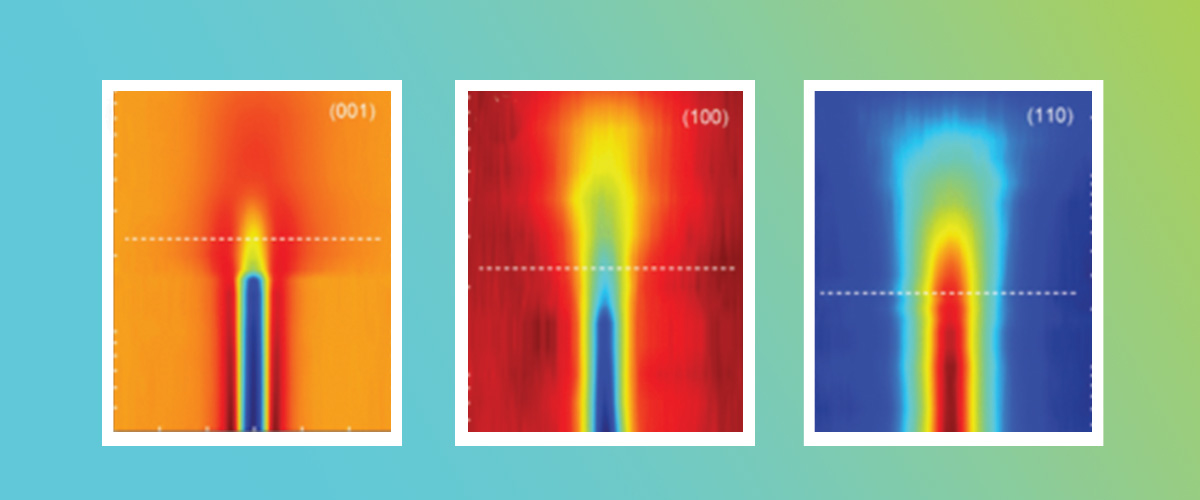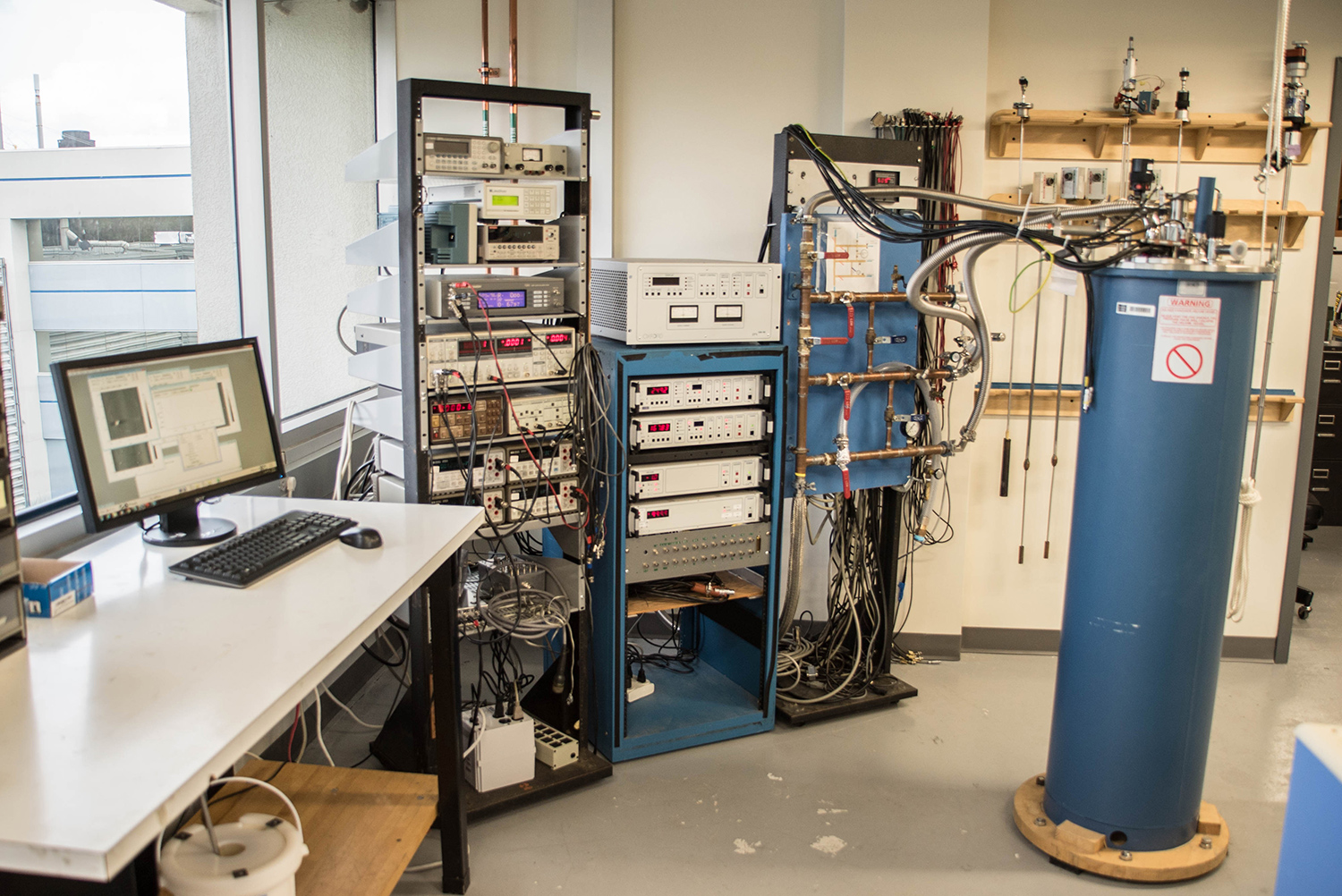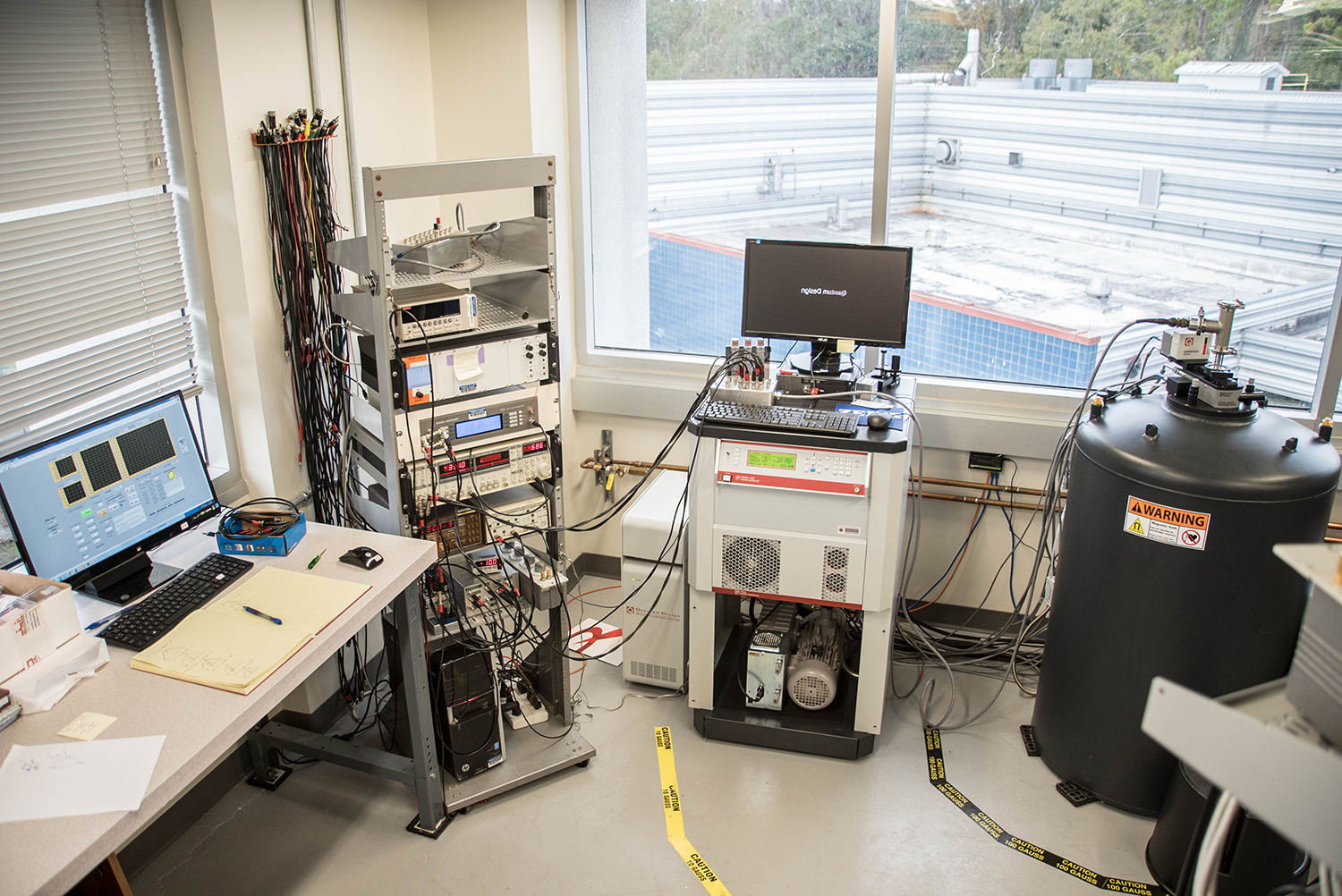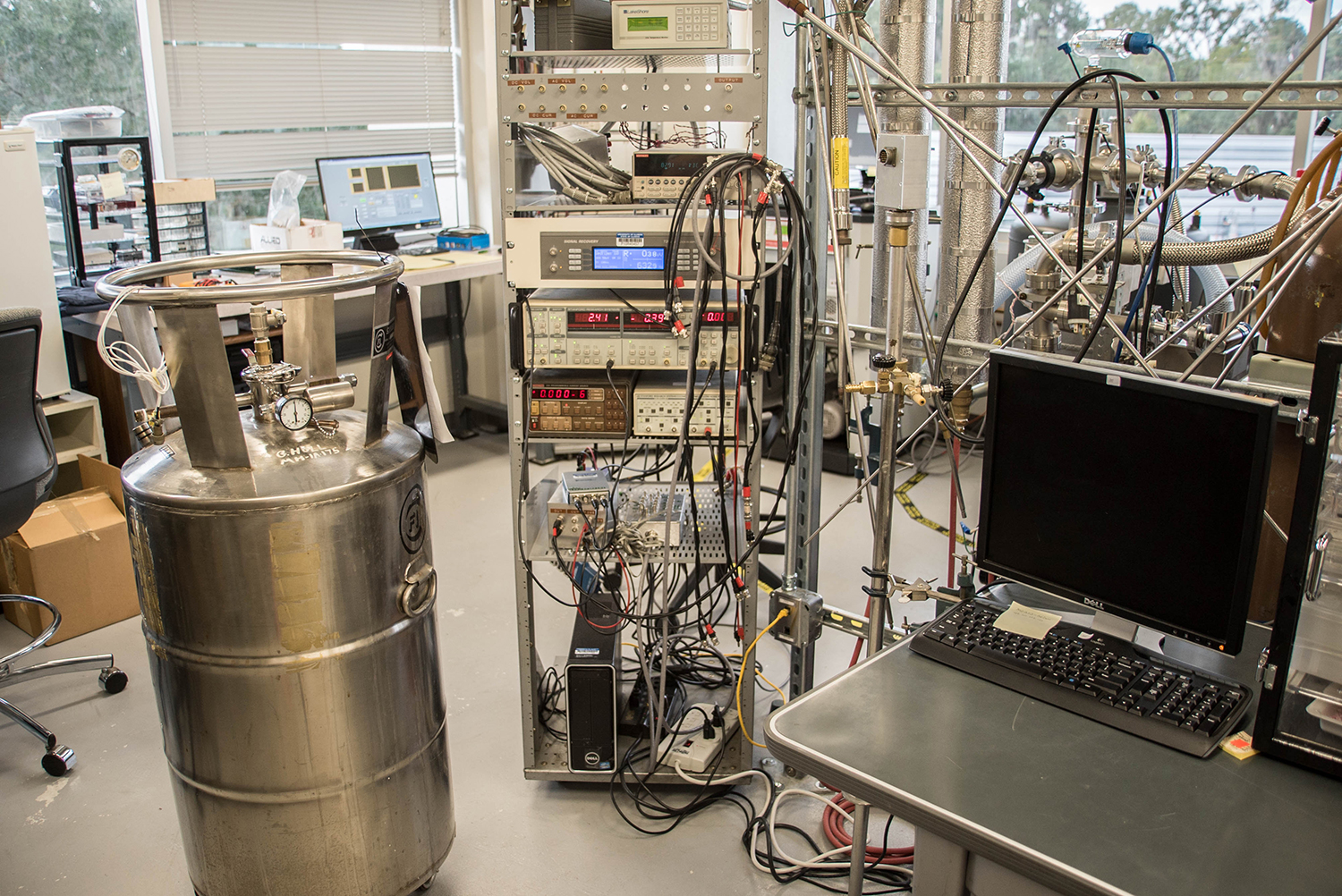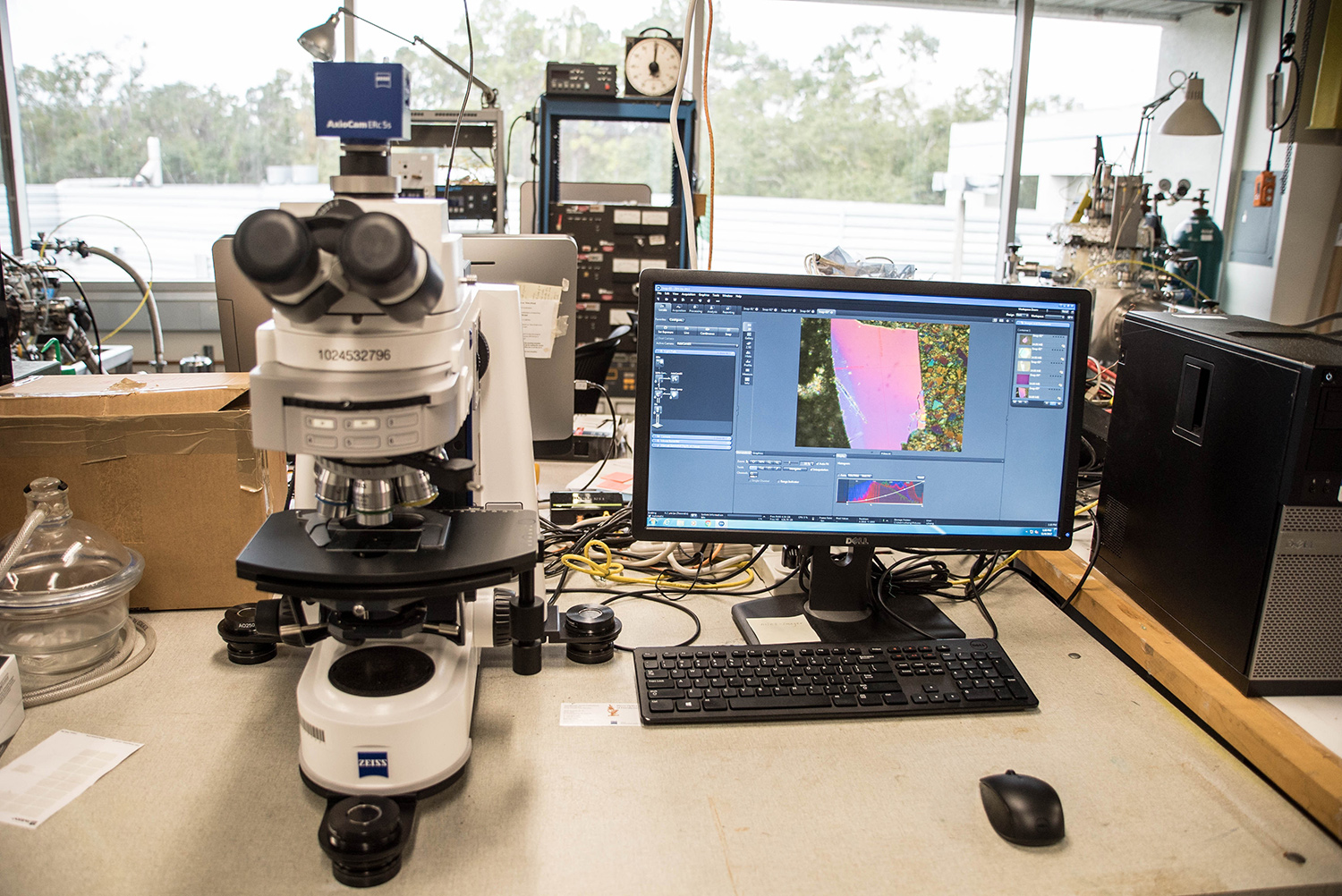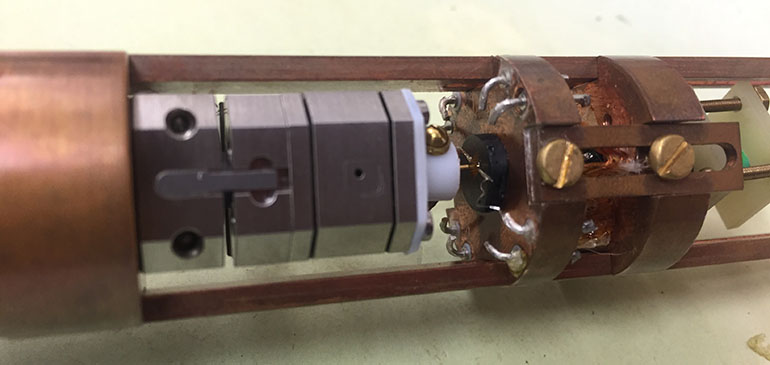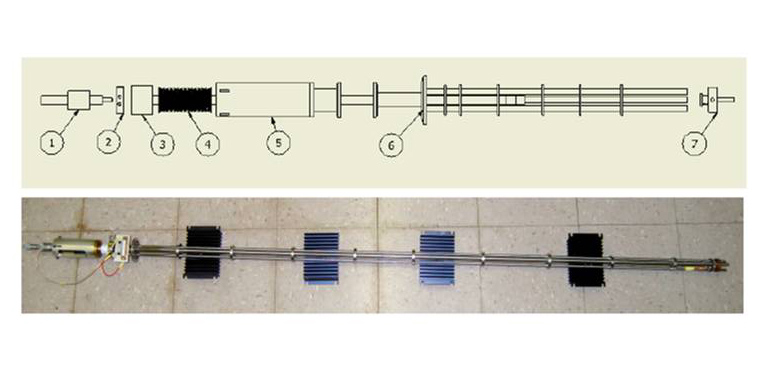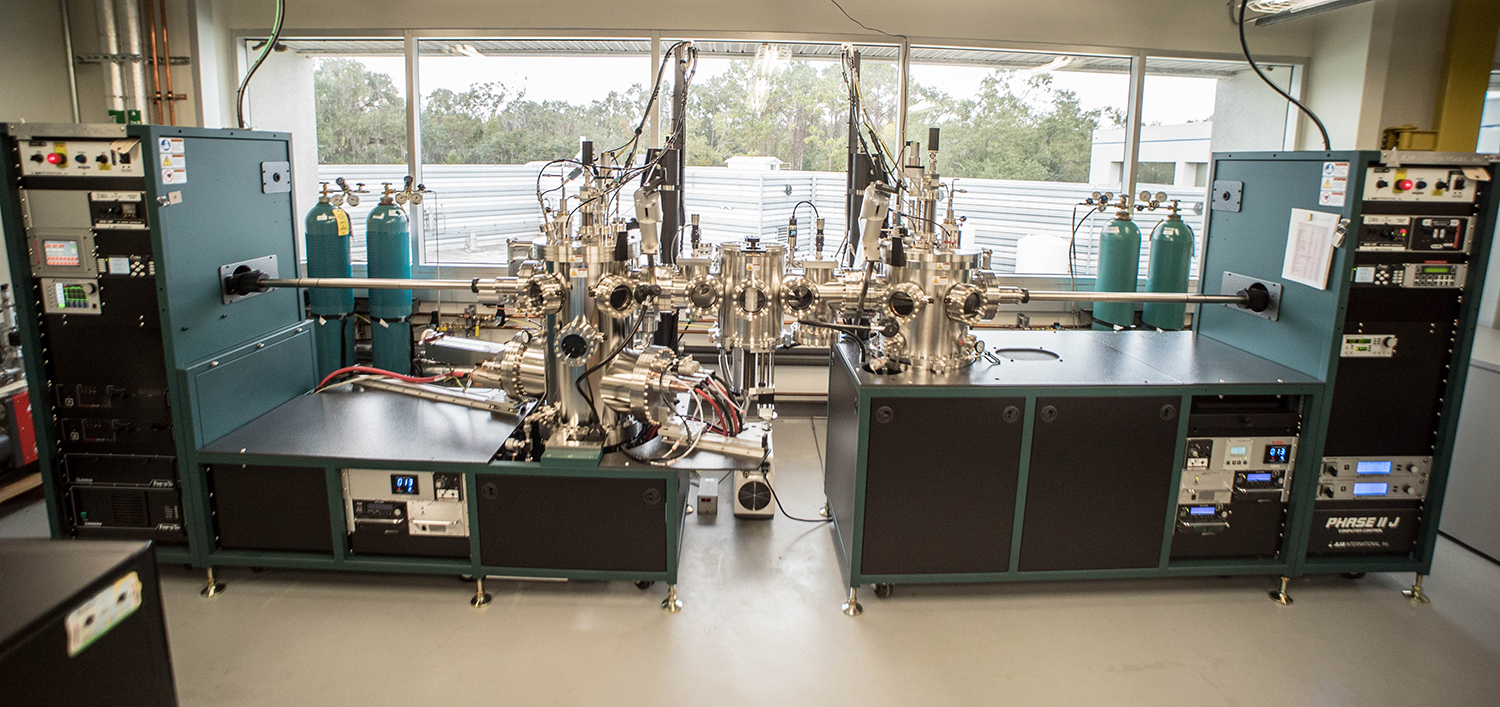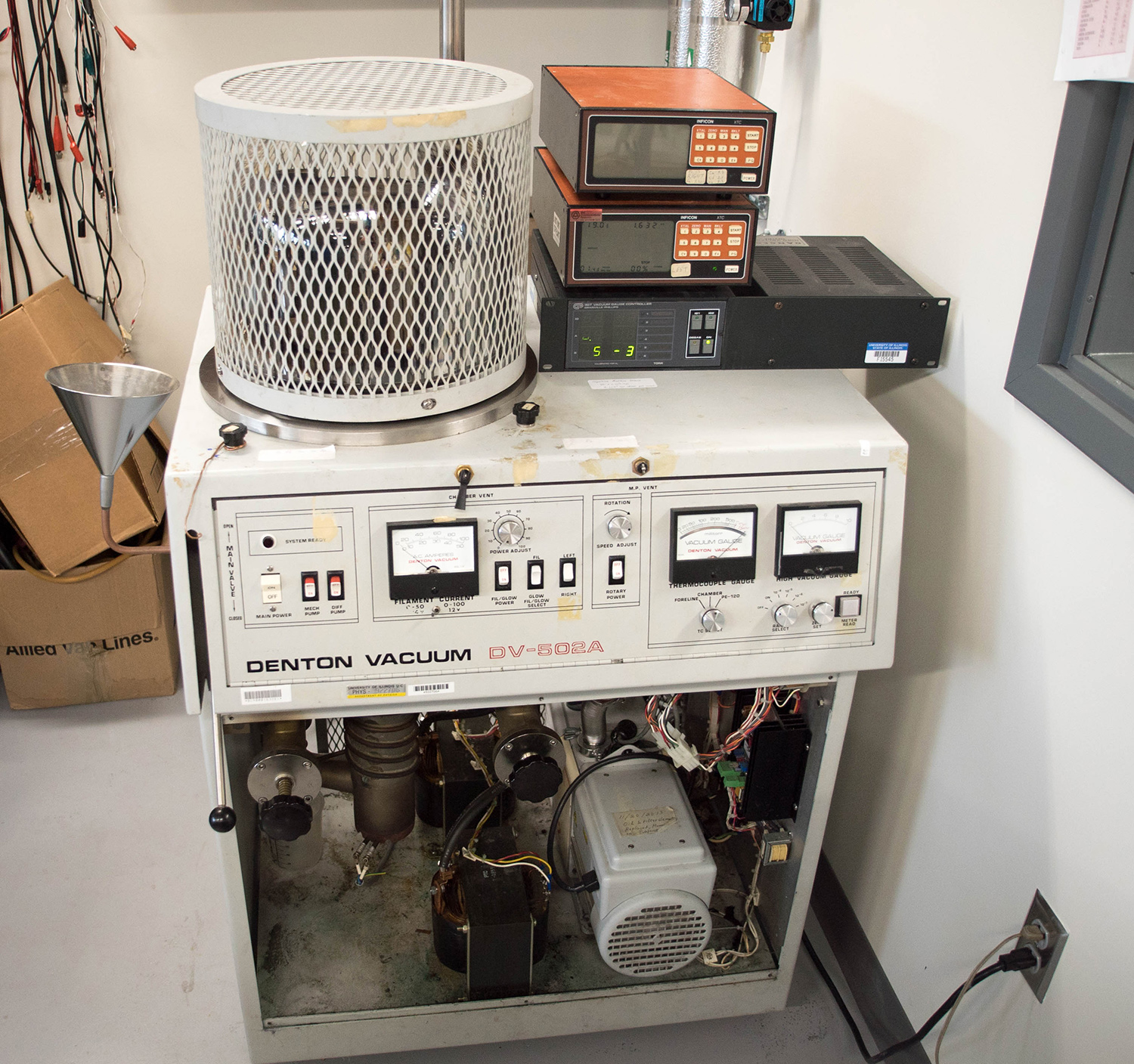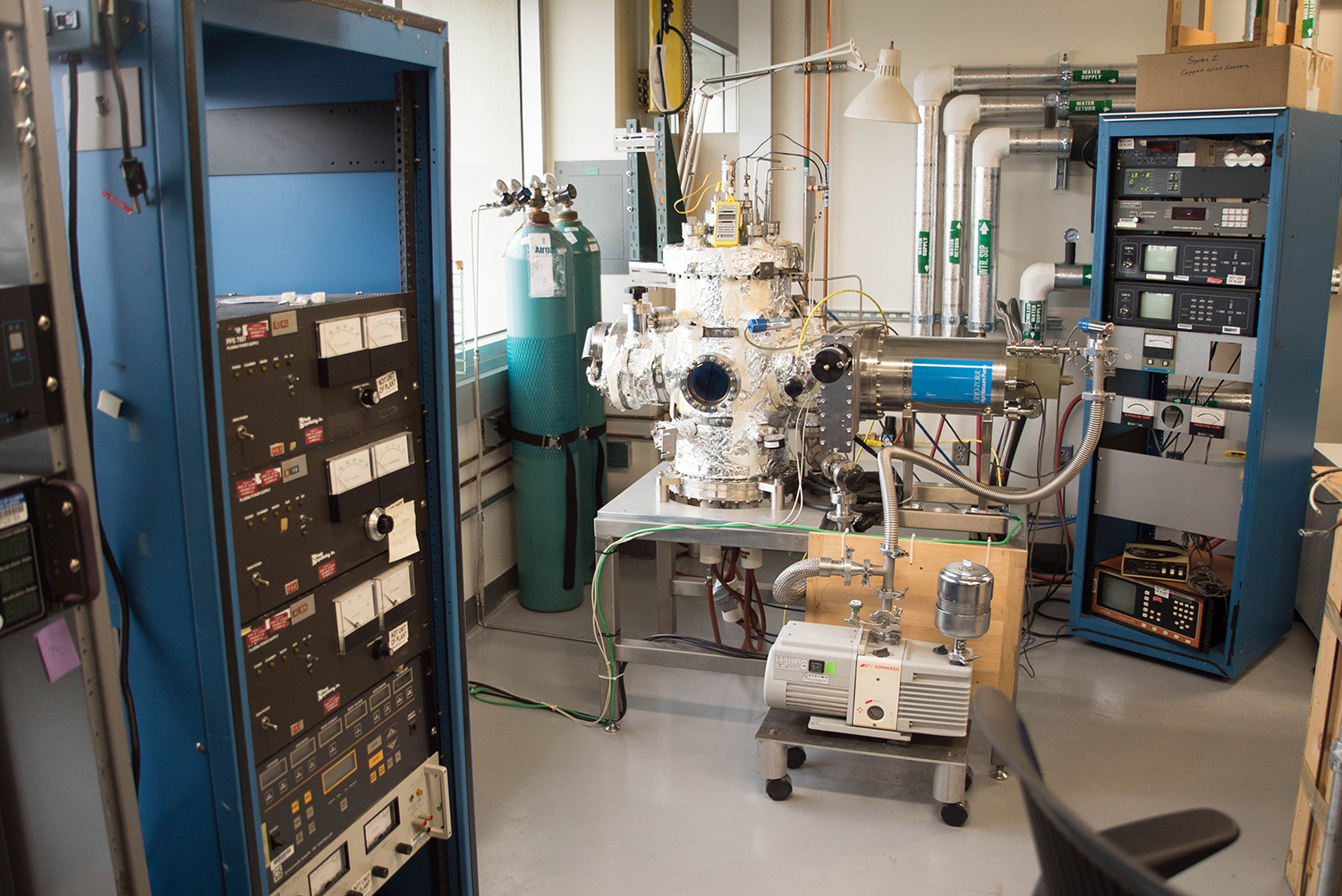Our research involves a variety of activities ranging from sample preparation, measurement to data analysis. Samples are typically in either thin film or single crystalline form. Thin films are grown by sputtering or evaporation techniques in vacuum deposition systems. Single crystalline samples oftentimes need to be polished to mirror-like shininess for measurements or further processing, for which optical microscopes are used. More sophisticated devices like a tunnel junction are also prepared on these samples using lithographic techniques. As our research concerns about electron spectroscopic properties, two major techniques are employed: quasiparticle scattering spectroscopy (or point-contact spectroscopy) and planar tunneling spectroscopy. For these measurements, various probes and instrument setups are available to be used with cryostats for controlling the temperature and magnetic field.
Cryostats
The physical properties of samples and devices are measured in a cryostat for the control of sample temperature and the application of magnetic field.



